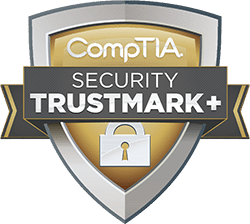Build your security immunity with an IT infrastructure checkup
used with permission from Tektonika (HP)
by Joe Hewitson
As a species, humans have a natural tendency to overcomplicate things. Take coffee, for example: It’s gone from simple, “good ’til the last drop” black coffee to iced, half-caff, ristretto, venti, four-pump, sugar-free, cinnamon, skinny latte. You’d be hard-pressed to buy a car without a full-blown home theater experience built-in nowadays—and let’s not even get started on those “it’s complicated” social media relationships.
IT infrastructure and office security are no different. People tend to complicate security until they can barely keep track of all the tricks and tools meant to keep their network secure. But it doesn’t have to take Herculean brain power and energy to make sure your environment is secure. Here’s a quick rundown of some practical steps you can take right now to inject some anti-venom into your office’s immune system.
Take a comprehensive roll call
You can’t do much without a working roster of endpoints to keep tabs on, so first thing’s first: Pull a page from your third grade teacher’s playbook and take a roll call. Just like Mrs. Brown called out a list of names to make sure no one was missing, check out your own inventory to ensure you’ve got a comprehensive understanding of each “pupil” in your classroom.
Obviously, standing in front of the room and calling out hostnames will do little more than win you a trip to the company therapist, but you get the point. Come up with a reliable list of each endpoint in your infrastructure: If it’s got a power cord and a network card—even a virtual one—call its name.
Hit the three Ds of diagnosis
After you understand all the working pieces comprising the body of your IT environment, it’s time to break it down. Pull out the hammer pants, get your best MC impression ready, and flip on some Doogie Howser for good measure. The following categories represent the three main systems you should examine during this checkup:
- Data storage
- Data creation
- Data use
Notice a theme? Taking a data-centric approach to office security is wise for a few reasons. Perhaps most obvious is the fact that data just happens to be what the bad guys are after—and what you want to protect. CSO Online recently reported on a study that found the average cost of data breaches in 2017 tips the scales at $3.5 million. This hefty figure led 80 percent of those in the study to adjust their office security approach.
What better way to change things up than to start with a data-centric health check?
Check up on your data security health
Let’s go after that first category: File servers, databases, and email servers are good examples of data storage systems. Checking their health should focus on the integrity and hardness of data in rest, so go ahead and check systems in this category for the appropriate encryption strategies for each data type. You’ll also want to make sure that access to critical data takes a “less is more” approach. The fewer ports, users, and workflows touching this data, the more secure it will be.
Data creation applies to any system through which data enters your environment. Most likely, this is your network-level infrastructure. Keeping tabs on the health of these routers and switches begs for a touch of automation, especially when you start taking virtual appliances into account.
For a regular health checkup, you’ll also want to focus on logs and real-time monitors. Take the time to properly unite these tasks on all network infrastructure through log aggregation and reporting services. Your routers and switches know exactly what’s flowing through their ports—you shouldn’t have to go digging for it.
Bolster your endpoints’ immune systems
Data-using endpoints round out the last piece of the IT infrastructure security puzzle. The bulk of these systems will undoubtedly be workstations and mobile devices. However, it’s easy to forget about endpoints like printers and IoT devices that also see regular data use.
For a quick health checkup, policy is a good place to start. Are the workstations manipulating critical data locked down from rogue USBs or unauthorized network connections? How about mobile devices? Do authentication policies match the sensitive nature of the data passing through these machines?
Don’t forget about non-digital data, too. Make sure printers attached to these workstations at least require authentication at the point of printing. Better yet, place your smartest fleet on this detail—ideally, a fleet that brings heightened visibility to its security health status through continuous monitoring. Those that include BIOS tamper protection and auto-firmware updating will even do part of this health check for you.
Going to the doctor’s office for a regular checkup is recommended for good reason. Without these checkups, disastrous diseases and subtle cancers can take root with terrible consequences. Office security is no different. Using the above as a template, taking stock of your environment’s health can be tackled in a surprisingly painless way.








